HEALTHY LIVING
7 ways to snack smarter
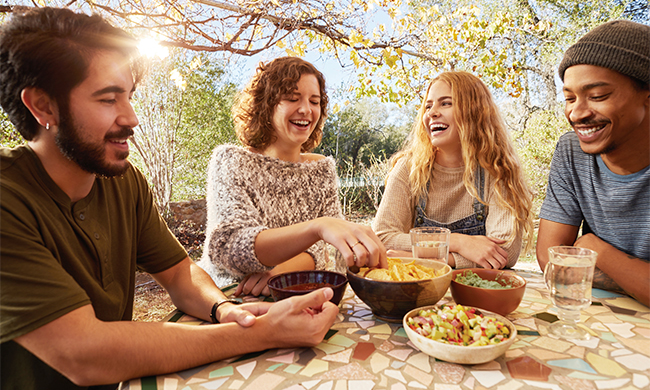
(Family Features) Eating a balanced breakfast, lunch and dinner each day is an important part of maintaining a healthy diet, but what you eat between mealtimes can have just as much of an impact.
Eating a snack or two between traditional meals helps curb hunger and prevents overeating at mealtimes, provides an energy boost and can also help bridge nutrient gaps in your diet when you choose the right foods. On the other hand, consuming foods of little nutritional value out of boredom or habit can lead to eating too much and adding extra pounds to your waistline.

The key is taking a smart approach to snacking and making small shifts toward healthier choices. Consider these simple strategies to help you get started from the snacking experts at Fresh Cravings.
Snack Mindfully. It’s easy to overeat and overlook fullness cues when snacking in front of the TV or at a desk. Instead, treat snack time like you would a small meal and take a few minutes to eat in a designated area with limited distractions. Avoid eating out of boredom or stress and choose whole foods like fruits and vegetables or air-popped popcorn over processed chips, baked goods or candy.
Plan Ahead. Snacks can be a significant portion of many people’s daily caloric intake, so it’s important to include snacks when planning out your meals for the day or week. Include fruits, vegetables and proteins in your snack schedule and avoid refined starches and sugar, which are typically found in prepackaged and processed snacks. Planning and preparing snacks ahead of time can help you bypass those quick, unhealthy options and save money in the process, as well.
Make Healthy Snacking Easy. Keeping fruit, vegetables and other accessible nutritious ingredients in the refrigerator or pantry increases the chances you’ll reach for a better-for-you option when a snack craving strikes. Having staple ingredients on hand that can be paired with vegetables or whole-grain crackers like Fresh Cravings Hummus makes it easy to create healthy snacks. Made with high-quality ingredients like smooth Chilean extra-virgin olive oil, savory tahini, which is known to be a source of antioxidants, vitamins and minerals, and non-GMO chickpeas, the line is available in Classic Hummus, Roasted Red Pepper and Roasted Garlic varieties and can be found in 100% recyclable packaging in the produce aisle of your local grocery store.
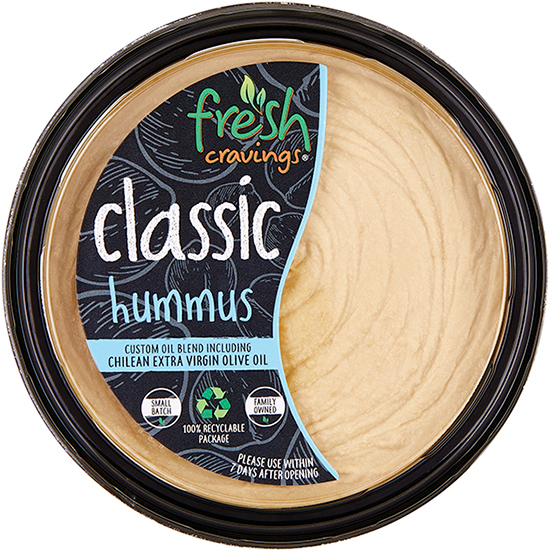
“Look for options that are filling and nutrient-dense,” said Mia Syn, MS, RDN, a dietitian who has helped millions learn healthier, sustainable eating habits. “My preference is Fresh Cravings Hummus because it’s a great example with whole-food ingredients like tahini, Chilean extra-virgin olive oil and non-GMO chickpeas, offering a balanced mix of filling fiber, plant-based protein and good fats.”
Combine Nutrient Groups. Each time you reach for a snack, try to include two or more macronutrients (protein, fat, carbohydrates). For example, choosing foods containing protein like low-fat cheese or nuts and pairing them with carbohydrates (whole-grain crackers, grapes) can create balanced, filling snacks. Carbohydrates help provide both your body and mind with energy while protein-rich foods break down more slowly, helping you feel full longer. Other ideas include celery and peanut butter or fruit and Greek yogurt, which are easy ways to get more low-calorie, high-fiber produce into your diet.
Pay Attention to Portion Sizes. Snacks are meant to help ward off hunger between meals, not be substitutes for meals entirely. While measuring out snacks isn’t usually necessary, having an awareness of appropriate portion sizes can be helpful. If buying or cooking in bulk, divide snacks into smaller containers when meal planning to make it convenient to simply grab an appropriate size snack and continue your day.
Pack Snacks to Go. Having grab-and-go snacks packed while out running errands, working or completing everyday tasks can help keep you on track when hunger strikes. Packing items that don’t require refrigeration like trail mix, whole-grain crackers or granola bars can keep you from stopping at a convenience store or picking an unhealthy option from a vending machine. Preparing snacks at home also gives you more control over the ingredients you’re eating to ensure you’re sticking to an eating plan that’s better for your overall health.
Set a Good Example. Parents can influence children’s snack habits by consuming healthy snacks themselves. An option like sliced veggies paired with the rich flavors of chickpeas and creaminess of tahini found in hummus can be a perfect match to both satisfy hunger in a delicious way and build better-for-you habits. Snack time is also an opportunity to let kids learn about healthy eating by participating in choosing and preparing snacks. Cutting fruits and vegetables or turning foods into crafts are easy ways to get little ones involved in the process.
“For families challenged with integrating more veggies into their diets, hummus is also a kid-friendly flavor enhancer that packs beneficial nutrition instead of the saturated fats and sugar often found in many traditional dressings and condiments,” Syn said.
Smart Snack Ideas
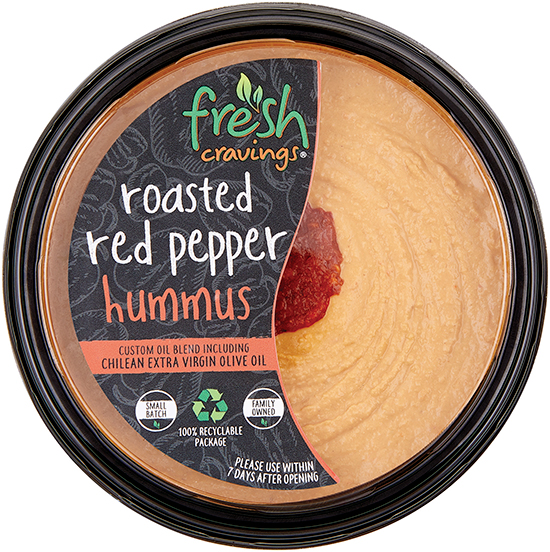
Between work, school, extracurricular activities and family functions, it may seem like there’s no time to eat healthy when your family is seemingly always on the go. However, finding the proper fuel is even more important when you’re trying to balance a hectic schedule, which is where snacks can play an important role between meals.
Consider these nutritious snack options that can help satisfy a variety of cravings without taking up too much of that valuable time.
Crunchy Munchies
- Apples or pears
- Carrot and celery sticks
- Cucumber or bell pepper slices
- Air-popped popcorn
- Brown rice cakes
- Nuts and seeds
Low-Sugar Sips
- Plain or sparkling water (add fruit or herbs for extra flavor)
- Unsweetened tea or coffee
- 100% vegetable or fruit juices with no added sugars
Satisfying Noshes
- Sliced vegetables with Fresh Cravings Classic, Roasted Red Pepper or Roasted Garlic Hummus
- Fruit and vegetable smoothies
Find more ideas to satisfy snack cravings at freshcravings.com.
Photo courtesy of Getty Images (Friends snacking)
SOURCE:
Fresh Cravings
HEALTHY LIVING
Getting high cholesterol under control

(Family Features) Heart disease is the nation’s leading cause of death for men and women, according to the Centers for Disease Control and Prevention, but many people aren’t aware they may be at elevated risk. More than 71 million adults in the United States have high low-density lipoprotein (LDL) cholesterol and nearly 50 million don’t have it under control, which puts them at higher risk for cardiovascular events, such as heart attack and stroke.
What’s more, nearly one-third (31%) of U.S. adults are not aware that having high cholesterol puts them at greater risk for heart attack and stroke, according to the findings of a recent study conducted by The Harris Poll commissioned by Esperion Therapeutics, Inc. The poll also revealed some inconsistent understanding about treatment options available for those with uncontrolled cholesterol. Fully 3 in 10 (30%) of those taking statins believe statins are the only LDL lowering treatment available for those with high LDL cholesterol.
“In auto racing, the red flag means danger on the track, stopping the race immediately,” said Dr. JoAnne Foody, chief medical officer at Esperion. “We are launching a patient education program, ‘Wave the Red Flag,’ to encourage people with uncontrolled high cholesterol to have their levels checked right away and discuss appropriate treatment options with their health care provider.”
If your high cholesterol is uncontrolled, understanding how you can achieve greater control can reduce your risk for serious health conditions, including potentially life-threatening cardiovascular events.
Consider these tips to get high cholesterol under control.
Talk with your doctor. Speaking with your physician is an important first step to managing any health condition. Your doctor can help you understand the severity of your condition and whether a treatment plan should be moderate or aggressive.
Check your progress. Keeping tabs on your cholesterol can help you and your health care team gauge whether your treatment plan is working. If you don’t have heart disease, you may not need to check as frequently, but your doctor can recommend the appropriate intervals to help manage your cholesterol most effectively.
Take medications as prescribed. Statins are the medications most often recommended by treatment guidelines for the management of blood cholesterol, and nearly one-third (30%) of those taking statins believe they are the only cholesterol-lowering treatment available, according to the survey. However, even with maximal statin therapy, some patients with chronic disease do not meet recommended LDL cholesterol levels. Taking your medications regularly and as instructed helps your doctor determine whether additional therapies – including non-statin treatments – could be useful to help manage your blood cholesterol.
Make lifestyle adjustments. Your diet plays a major role in lowering LDL cholesterol. Limiting fatty foods, especially those that are high in saturated and trans fats, is key. Monitoring your overall diet and exercising can also help reduce your risk of high cholesterol. Even if you don’t have high cholesterol, adopting more cholesterol-friendly habits can help prevent your levels from rising to unhealthy levels in the future.
To find additional information about managing your high cholesterol, talk to your health care provider and visit WaveTheRedFlag.info.
Fast Facts About Cholesterol
What is cholesterol?
The liver creates a fat-like waxy substance called cholesterol. It serves useful purposes for the body, including producing hormones and helping digest food.
How do you get high cholesterol?
The human body makes all the cholesterol it needs naturally, so any cholesterol you eat is cholesterol you don’t need. However, it can be difficult to avoid because you can find dietary cholesterol in many common foods, including meat, seafood, poultry, eggs and dairy. Other non-dietary contributing factors include health conditions like obesity and diabetes, as well as family history and advancing age.
What is a normal cholesterol level?
An average optimal level of LDL cholesterol is about 100 milligrams per deciliter (mg/dL).
An average optimal level of high-density lipoprotein, or HDL, cholesterol is at least 40 mg/dL for men and 50 mg/dL for women. HDL cholesterol can actually lower your risk of heart disease and stroke.
Are there symptoms of high cholesterol?
Unlike many health conditions, there are rarely any symptoms that your cholesterol is high. That’s what makes regular screening so important.
Photos courtesy of Shutterstock
SOURCE:
Esperion
HEALTHY LIVING
Learn CPR as a life-saving skill

(Family Features) While many Americans agree Conventional CPR (cardiopulmonary resuscitation) or Hands-Only CPR (HOCPR) significantly improve a person’s chance of survival from cardiac arrest, less than half are confident they can perform either Conventional CPR or HOCPR in an emergency.
Black or Hispanic adults who experience cardiac arrest outside a hospital setting are substantially less likely to receive lifesaving care from a bystander. In spite of these survey results, the American Heart Association is working to change this by empowering members of these communities to learn lifesaving CPR, and a growing segment of respondents are willing to act in an emergency.
The American Heart Association’s 2023 survey also revealed that as a result of the organization’s efforts to change attitudes about performing CPR, which can lead to lifesaving results, more than half of African Americans said they would be willing to perform CPR in an emergency compared to 37% two years ago. Additionally, Hispanic and Latino respondents are more confident in their abilities to perform CPR.
Committed to turning a nation of bystanders into lifesavers, the American Heart Association’s multiyear initiative, Nation of Lifesavers, helps teens and adults learn how to perform CPR and use an automated external defibrillator (AED); share that knowledge with friends and family; and engage employers, policymakers, philanthropists and others to create support for a nation of lifesavers.
“Each of us has the power in our own hands to respond to a sudden cardiac arrest,” said Anezi Uzendu, M.D., American Heart Association expert volunteer. “We simply need to know what to do and have the confidence to act.”
The long-term goal: to ensure that in the face of a cardiac emergency, anyone, anywhere is prepared and empowered to perform CPR and become a vital link in the chain of survival, aiming to double the survival rate of cardiac arrest victims by 2030. It takes just 90 seconds to learn how to save a life using HOCPR, which can be equally as effective as traditional CPR in the first few minutes of cardiac arrest.
Nationally supported by the Elevance Health Foundation, the American Heart Association’s HOCPR campaign is focused on chest compression-only CPR. If a teen or adult suddenly collapses due to a cardiac event, you can take two steps to save a life: immediately call emergency services and use these tips to begin performing HOCPR.
- Position yourself directly over the victim.
- Put the heel of one hand in the center of the chest and put your other hand on top of the first.
- Push hard and fast in the center of the chest at a rate of 100-120 beats per minute, which is about the same tempo as the song “Stayin’ Alive” by the Bee Gees, and at a depth of approximately 2 inches.
- Continue compressions and use an AED, if available, until emergency help arrives.
To learn more about how you could be the difference between life and death for someone experiencing a cardiac event, visit Heart.org/nation.
Photo courtesy of Shutterstock
SOURCE:
American Heart Association
HEALTHY LIVING
Combating loneliness in older adults
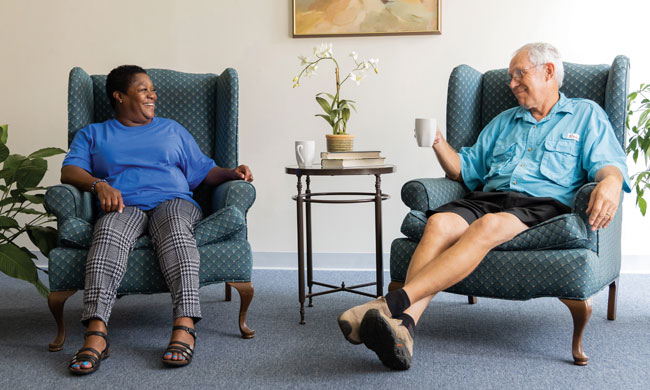
(Family Features) The bonds found in friendships and other relationships are an important factor in health and wellness – even science says so.
According to the American Psychological Association, forming and maintaining social connections at any age is one of the most reliable predictors of a healthy, happy and long life. Studies show having strong and supportive friendships can fend off depression and anxiety, lower blood pressure and heart rates in stressful situations and change the way people perceive daunting tasks.
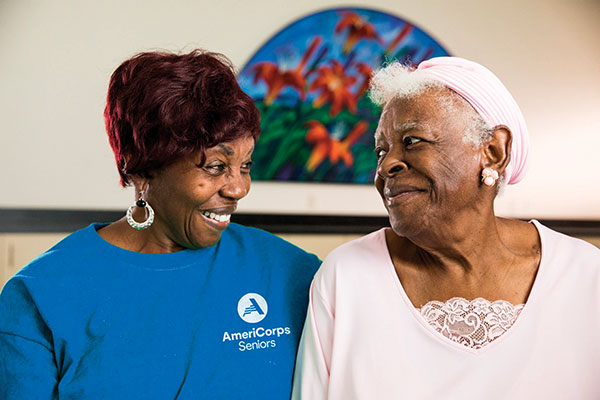 However, statistics show approximately half of U.S. adults lack companionship and feel socially disconnected, according to the U.S. Surgeon General’s Advisory on the Healing Effects of Social Connection and Community. In fact, 12% don’t have anyone they consider a close friend, per the Survey Center on American Life. This “epidemic of loneliness,” as coined by U.S. Surgeon General Dr. Vivek Murthy, can take a severe toll on mental and physical health.
However, statistics show approximately half of U.S. adults lack companionship and feel socially disconnected, according to the U.S. Surgeon General’s Advisory on the Healing Effects of Social Connection and Community. In fact, 12% don’t have anyone they consider a close friend, per the Survey Center on American Life. This “epidemic of loneliness,” as coined by U.S. Surgeon General Dr. Vivek Murthy, can take a severe toll on mental and physical health.
As people age, the risks of isolation increase. With America’s older population growing rapidly – the 65 and older population reached more than 55 million in 2020 – discussing how older adults can combat loneliness is relevant to public health and individual well-being.
Consider volunteering, which is one of the best and most rewarding ways to combat loneliness.
Volunteering Combats Loneliness
People often volunteer to find a sense of purpose, learn new skills, improve their communities or establish new routines after retiring or becoming empty nesters. For many, making friends through volunteer work is a welcome bonus. The act of volunteering provides proven benefits for older adults.
Forming connections can make all the difference in a person’s volunteer experience and sense of well-being. People who meet through volunteer work inherently share a common interest and something to bond over. These friendships can carry over outside of volunteer work and lead to bonding over other hobbies and interests.
Connection-Focused Volunteer Opportunities
In addition to making friends with fellow volunteers, many older adults also form relationships with the people they’re serving, especially if those recipients are their peers.
For example, AmeriCorps Seniors is the national service and volunteerism program in the federal agency of AmeriCorps that connects adults aged 55 and up to local service opportunities that match their interests. Its Senior Companion Program pairs volunteers with other older adults or those with disabilities who need companionship or assistance. Volunteers may help with tasks such as paying bills, shopping or getting companions to appointments. In some cases, volunteers may also provide support and respite for family members caring for loved ones with chronic illnesses.
“We often think of volunteering as ‘giving back,’ but we’ve seen firsthand that it often becomes so much more than that,” said Atalaya Sergi, director of AmeriCorps Seniors. “By spending a few hours each week with another older adult in need of support, our volunteers are not only giving back to others, but they’re adding meaning to their own lives and establishing new connections. They’re helping to fight the loneliness epidemic one visit at a time.”
Growing older can come with challenges, but some of those can be minimized with a positive mindset and commitment to remaining connected and engaged – whether with friends, relatives or fellow community members. Fostering relationships is a key ingredient to a healthier and more fulfilling life.
For more information and to find volunteer opportunities near you, visit AmeriCorps.gov/YourMoment.
Meet Friends Who Connected Through Service
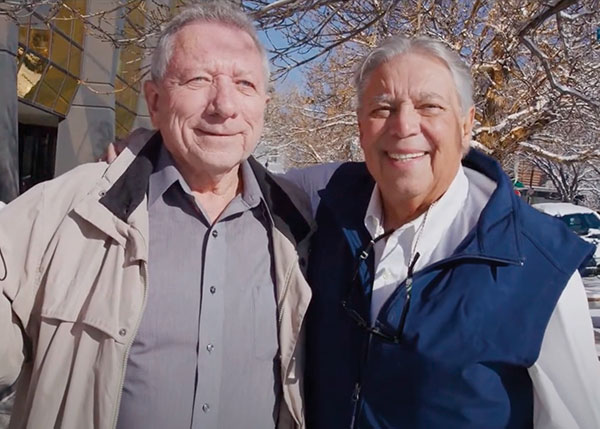 Ray Maestas felt unfulfilled post-retirement and began volunteering with the AmeriCorps Seniors Senior Companion Program. He was connected with Bob Finnerty, a man with blindness looking for assistance a few days each week. They quickly struck up a routine of errands, reading and conversation that’s since become a friendship they both cherish.
Ray Maestas felt unfulfilled post-retirement and began volunteering with the AmeriCorps Seniors Senior Companion Program. He was connected with Bob Finnerty, a man with blindness looking for assistance a few days each week. They quickly struck up a routine of errands, reading and conversation that’s since become a friendship they both cherish.
“The Senior Companion Program has provided an avenue to enrich the lives of not only the participants but the people who are volunteering,” Maestas said. “Bob and I have gotten to the point where he’s a very important part of my life.”
Finnerty echoed those sentiments and shared his own appreciation for Maestas’ friendship.
“I’ve always relished my independence and I feel Ray is not just a person who reads for me – he’s a friend,” Finnerty said.
In the last few years, Maestas moved and now serves with a different chapter of the Senior Companion Program. He and Finnerty keep in touch. Maestas said they talk about every third day.
SOURCE:
AmeriCorps Seniors
-

 NEWS1 year ago
NEWS1 year ago2 hurt, 1 jailed after shooting incident north of Nocona
-

 NEWS5 months ago
NEWS5 months agoSuspect indicted, jailed in Tia Hutson murder
-

 NEWS12 months ago
NEWS12 months agoSO investigating possible murder/suicide
-

 NEWS1 year ago
NEWS1 year agoWreck takes the life of BHS teen, 16
-

 NEWS9 months ago
NEWS9 months agoMurder unsolved – 1 year later Tia Hutson’s family angry, frustrated with no arrest
-

 NEWS12 months ago
NEWS12 months agoSheriff’s office called out to infant’s death
-

 NEWS1 year ago
NEWS1 year agoBowie Police face three-hour standoff after possible domestic fight
-

 NEWS1 year ago
NEWS1 year agoDriver stopped by a man running into the street, robbed at knifepoint





